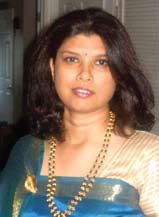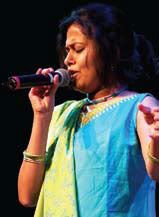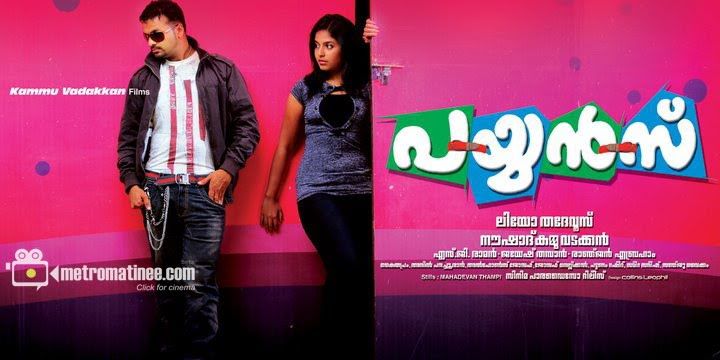My story on contemporary Malayalam film music scene written for the December issue of Sound Box magazine. Here is an unedited version. You can read the e-magazine from here (go to page # 36 to read).
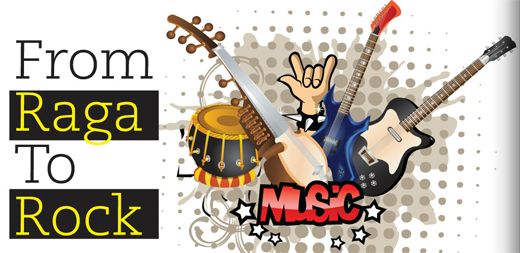
Ask any Malayalee what genre of music he or she likes and the instant reply you would get is melody. Even though the word ‘melody’ has somewhat different meaning in music, the average Malayalee uses it to refer to the soft and soothing music. Malayalam film music has played a big role in developing this ‘taste of melody’ among the Malayali audience. Like many other film music industries in India, Malayalam also did not have much exposure to the various genres of music outside the Indian classical music system. As a result, it contained itself to be a simplified version of Karnatik and Hindustani music systems for the past several decades. The equations however are changing and fast.
The old school
The lighter version of the various Indian classical music schools went very well with the audience too, thanks to the lyricists like Vayalar Ramavarma and P Bhaskaran who used simple words to convey the ideas through songs. Their words and the lighter forms of classical music stayed with the audience. Composers like G Devarajan and M S Baburaj were a supreme influence of this era. Singer K J Yesudas was another big factor and his voice had set a benchmark to the singing aspirants of Malayali society. But there was little life for popular music outside the film music scene that got stuck to the style of Karnatik music. Then came music composer M G Radhakrishnan who popularized a music genre called “Light Music” in Kerala. Radhakrishnan who was working with All India Radio before he entered the film music had helped this genre to become mainstream. Parallely, Yesudas had also begun releasing light music albums under his own recording label Tharangini. Be it in popular music (that consisted of light music) or film music, Yesudas found a massive fan following.
“In an industry where a lot of music has become formulaic, often bcos the producer tells the music producer exactly which hit song to copy ;), I think filmmakers who are experimental enough to approach indie artists are looking for something different and thats what they are getting. I’m sure the audience can make out the difference and appreciate it. – Suraj Mani, singer and ex-vocalist of Motherjane
Late 80s and early 90s saw the Malayalam film music going back to it’s classical roots with much vigor that was not seen even in the early days. Thanks to a new trend in film music called ‘semi-classical’ which was made popular by music director Raveendran. The trio of composer Raveendran, singer Yesudas and actor Mohan Lal made these films and genre extremely popular. This has in a way helped bridge the gap between the general public and Karnatik music but it did not change much for the Malayalam film music.
The pace hots up
Meanwhile, a younger generation of Malayalees was growing up, listening to the fast paced Hindi and Tamil film music. The ‘dappankuth’ genre of fast paced Tamil numbers had taken over the Malayali youngsters so much so that every orchestra or every single Malayali musical programmes had to have a few Tamil numbers to mark a grand closure of the show. TV channels were flocking with requests from Malayali youngsters to play fast-paced Tamil songs. Indi-pop singers like Daler Mehndi also had a huge fan following here in his heydays.
But the clutches of classical music stayed on in Malayalam film music and not many tried to break the barrier (agreed that there were one-off attempts at western music by music composers like Devarajan) until a new music director came into the scene. Jassie Gift became a household name among Malayalees with a single song called “Lajjavathiye”. The song was a massive hit not only in Kerala but in other south Indian states like Tamil Nadu, Andhra Pradesh and Karnataka, and heavily contributed to the success of the movie that featured the song (which was then remade into other south Indian languages). The song with it’s Rap intro, heavy beats and a different style of singing by Jassie himself had drawn much criticism from the purists of music but nevertheless enjoyed a huge success. Alternatively, another music director, Alphons, was also experimenting with different genres of music. One of his compositions in Malayalam film “Manju poloru penkutti” had an English number that featured one of the best voices in the contemporary Malayalam film music industry, Sayanora.
But still, a bigger change of genre was just waiting to happen. Musicians like Jassie or Alphons had to work with an older generation of movie makers, a fact which might have drawn limits to their experiments in music. This applies to almost all new entrants in the Malayalam film music industry. But a new era of young and vibrant film makers in the industry has dared to take the film music score to a new level of experiments. Parallely, the Malayali music bands like Avial and Motherjane were making waves across the country and abroad.
Leading the change
Director Aashiq Abu was probably the first among these new age movie directors to introduce the Malayali rock band Avial in his popular film ‘Salt N Pepper’. The song was used for the movie’s online promotions, but Aashiq Abu could not feature it full length in the film or let the band compose the score of the film. So while the movie and songs were scored by another young music director Bijibal, the Avial song was played at the end of the movie. Sameer Thahir, another young movie director, went a step further and roped in Avial’s lead guitarist Rex Vijayan to set score for his debut venture “Chappa Kurishu”. The change was clearly audible in the music of the movie. Rex’s second film music project was for Aashiq Abu’s third flick “22 Female Kottayam” and this also has made a mark in the industry. He has also composed for the film “Second Show” with his band Avial. It would be interesting to note that Rex Vijayan had said in an interview that he has no idea of raagas. This is in a music industry that has it’s roots gone deep in the classical music system and it clearly shows the sign of a transition phase.
As a band, Avial was already a popular up north , not so much so down here. But, with ‘aanakallan’ (the song from the movie ‘Salt N Pepper’) they became household names in Kerala and that year we did a lot of shows in Kerala for colleges and Govt. sponsored shows and corporate events. – Neha S Nair, playback singer and vocalist of Avial
The raaga to rock journey in the Malayalam film music industry couldn’t get more visible than the entry of internationally acclaimed rock band of Malayali origin, Motherjane. Motherjane sang the English theme song “Jehad” for director Amal Neerad’s “Anwar”. But it’s not just the local musicians alone. The X-Factor fame Piyush Kapur has sung an end title song in English for the movie “Asuravithu”, which is in a pure metal flavor.
This could well be the beginning of a new era of diverse experiments in Malayalam film music. With a new set of film makers, music composers and a changing audience, the scene is definitely bringing up multiple genres together in Malayalm film music. There couldn’t be a better time and audience for such a change in the indie-music scene nationally and Kerala also seems to be marching in that direction.
 The music retailers in the south-Indian city of Thrissur are on the verge of losing their business to the greater threat of Internet piracy. Some of the small players in the business have already shut down their shops for good and the remaining retailers are struggling for business. Now there are only two large music stores in the city, if you ignore a couple of small stores, and the grapevine has it that one of them are planning to shut their business down soon. But how is it possible that a small south-Indian city music business is affected by Internet piracy? We are not living in a country like UK where 83% of the population are online. According to World Bank’s development indicators, we have only 5.3% of our population using Internet. So what could have lead to this situation?
The music retailers in the south-Indian city of Thrissur are on the verge of losing their business to the greater threat of Internet piracy. Some of the small players in the business have already shut down their shops for good and the remaining retailers are struggling for business. Now there are only two large music stores in the city, if you ignore a couple of small stores, and the grapevine has it that one of them are planning to shut their business down soon. But how is it possible that a small south-Indian city music business is affected by Internet piracy? We are not living in a country like UK where 83% of the population are online. According to World Bank’s development indicators, we have only 5.3% of our population using Internet. So what could have lead to this situation?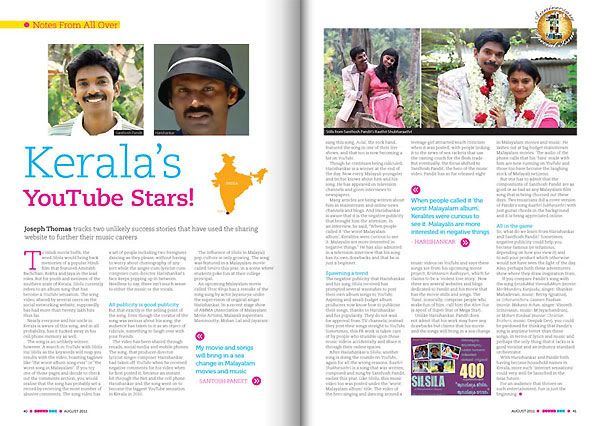
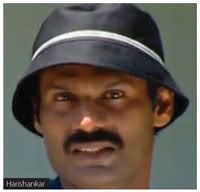 But that exactly is the selling point of the song. Even though the creator of the song was serious about his song, the audience has taken to it as an object of ridicule, something to laugh over with your friends.
But that exactly is the selling point of the song. Even though the creator of the song was serious about his song, the audience has taken to it as an object of ridicule, something to laugh over with your friends. The negative publicity that Harishankar and his song ‘Silsila’ received has prompted several wannabes to post their own album songs to YouTube. Aspiring and small-budget album producers now know how to publicise their songs, thanks to Harishankar and his popularity. They do not wait for approval from TV channels; instead they post their songs straight to YouTube. Sometimes this PR work is taken care of by people who stumble upon these music videos accidentally and share it through their online spaces.
The negative publicity that Harishankar and his song ‘Silsila’ received has prompted several wannabes to post their own album songs to YouTube. Aspiring and small-budget album producers now know how to publicise their songs, thanks to Harishankar and his popularity. They do not wait for approval from TV channels; instead they post their songs straight to YouTube. Sometimes this PR work is taken care of by people who stumble upon these music videos accidentally and share it through their online spaces.
 These musical meets sometimes have a central theme. If Ek sham Bhoole Bisre Geet ke naam was about celebrating retro Hindi film songs, they had two musical meets dedicated to the legendary composer
These musical meets sometimes have a central theme. If Ek sham Bhoole Bisre Geet ke naam was about celebrating retro Hindi film songs, they had two musical meets dedicated to the legendary composer  They meet twice a month to jam with other musicians. “Usually they have to wait for once-ayear community events organised by Indian regional communities where they hardly get a chance to sing a song due to the time constraints. We thought it would be helpful to create a consistent opportunity to perform where it could benefit the existing and the new musicians who relocate to Los Angeles to get the exposure they deserve,” Roshni says.
They meet twice a month to jam with other musicians. “Usually they have to wait for once-ayear community events organised by Indian regional communities where they hardly get a chance to sing a song due to the time constraints. We thought it would be helpful to create a consistent opportunity to perform where it could benefit the existing and the new musicians who relocate to Los Angeles to get the exposure they deserve,” Roshni says.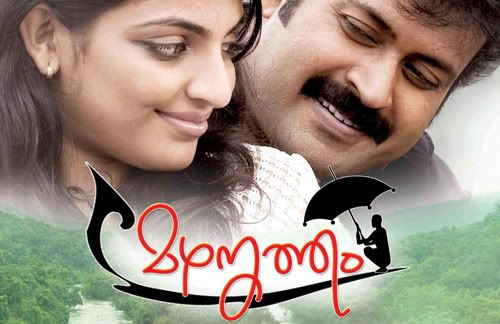
 Neha S Nair is a playback singer, VJ and blogger. Her TV shows are popular among the youth of Kerala and her songs form the show Outkast Vocals is a big hit on YouTube. Neha represents the youth of Trivandrum who listen to eastern music while keeping an open ear to western and experimental music.
Neha S Nair is a playback singer, VJ and blogger. Her TV shows are popular among the youth of Kerala and her songs form the show Outkast Vocals is a big hit on YouTube. Neha represents the youth of Trivandrum who listen to eastern music while keeping an open ear to western and experimental music. Trivandrum has a big audience for traditional eastern music but the young generation appreciates the western music and many new progressive bands are coming up from the city. Do you see any change of direction in the music scene of Trivandrum? If yes, how is it affecting the city? How do you see the future of the music scene here?
Trivandrum has a big audience for traditional eastern music but the young generation appreciates the western music and many new progressive bands are coming up from the city. Do you see any change of direction in the music scene of Trivandrum? If yes, how is it affecting the city? How do you see the future of the music scene here?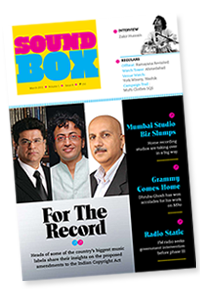 [This is my first full feature for Sound Box that appeared in the March 2011 issue. Sound Box is creating ripples in the music industry with the recent at-length discussion on India Copyright Act. February issue had Javed Akhtar explaining his stand and the March issue features the opinion from country’s leading musical labels – Saregama, Tips and Universal music. Check out the mag to get you up-to-date with the music industry buzz.]
[This is my first full feature for Sound Box that appeared in the March 2011 issue. Sound Box is creating ripples in the music industry with the recent at-length discussion on India Copyright Act. February issue had Javed Akhtar explaining his stand and the March issue features the opinion from country’s leading musical labels – Saregama, Tips and Universal music. Check out the mag to get you up-to-date with the music industry buzz.]